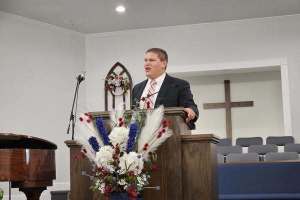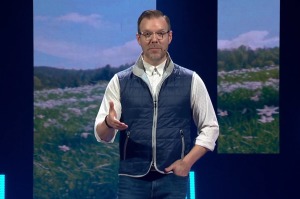Pastor Answers Atheist's Easter Challenge
A small town pastor whose seminary training comes from a Bible school that no longer exists claims to have successfully answered a nearly 20-year-old atheist challenge surrounding the resurrection and ascension of Jesus Christ.
With that, he hopes that critics will, at least, stop accusing the resurrection accounts of contradiction.
"A dead man coming back to life is a grand thing to claim," writes Stephen Kingsley from Craigmont, Idaho, in The Easter Answer. "Were it possible to prove the resurrection accounts contradictory as skeptics have asserted, such a thing might give some a reason to justify their doubt. But what now?
"Like a phone that won't stop ringing, we must all answer, and will answer the question: Did Jesus literally rise from the dead?"
More specifically, Kingsley was responding to a challenge posed by Dan Barker of Freedom From Religion Foundation, to simply lay out in chronological order what exactly happened from the time of the resurrection up to the time of Jesus' ascension without omitting any details from the separate accounts recorded in the four Gospels as well from two other New Testament books.
Barker, a former preacher and Christian songwriter, presented the challenge in 1992, believing the biblical accounts were contradictory in numerous places.
"When I realized why the Challenge was being made, in an attempt to de-convert Christians or prevent the unsaved from coming to faith, it hit me kind of hard," Kingsley commented. "The Bible was given to produce faith, these guys are trying to reverse that and turn the Bible into something to do the opposite."
According to the Craigmont pastor, few have responded and none have succeeded.
Several top scholars told Kingsley they also acknowledged that there has been no plausible solution to reconciling the biblical accounts on the resurrection.
"I do know that it's next to impossible to provide the sequence of events in the post-Resurrections," said Dr. J. Lyle Story of Regent University. "There's no way that they can all be harmonized."
But Kingsley believes he has met Barker's terms and succeeded.
"I think the joy of my study is the discovery that indeed, the means exist by which the various accounts can be woven together without conflict," he commented.
Kingsley begins his timeline with "2 Marys came to see the tomb," which he records as having occurred on the eve of Easter, and then moves into chronicling the events of Easter Sunday, the days when Jesus appeared to his disciples and other people, and Jesus' ascension. The timeline ends with Jesus' appearance to Apostle Paul.
"It's only reasonable, that if each writer wrote the truth, no matter how complex their accounts appear when given a side-by-side comparison, there had to be a way to weave them together without strain," Kingsley pointed out. "It took five years for the light to come on and for the chronology of Easter to fall into place."
He reminds readers he is not a scholar and that he has answered the challenge as a fellow Christian, as "nothing more than a Bible reader and lover," he writes in his book. He also acknowledges that what he presents may not be the answer but given that the only requirement for the challenge was to assemble all the verses relative to the resurrection of Jesus and his appearances together into one consistent narrative without contradiction, he believes he has come up with a plausible answer.
"Consistency, if indeed it is granted to exist, doesn't prove the resurrection happened or that the writers were 'guided and directed by an omniscient, omnipotent deity while they were writing their gospels,' but it certainly shows that the biblical evidence God has provided us today is far more reliable than critics ... have wanted us to believe," Kingsley writes.
His solution was sent to Barker over a year ago but a reply - a rebuttal or congratulations - has not yet been received.
On the Web:





























